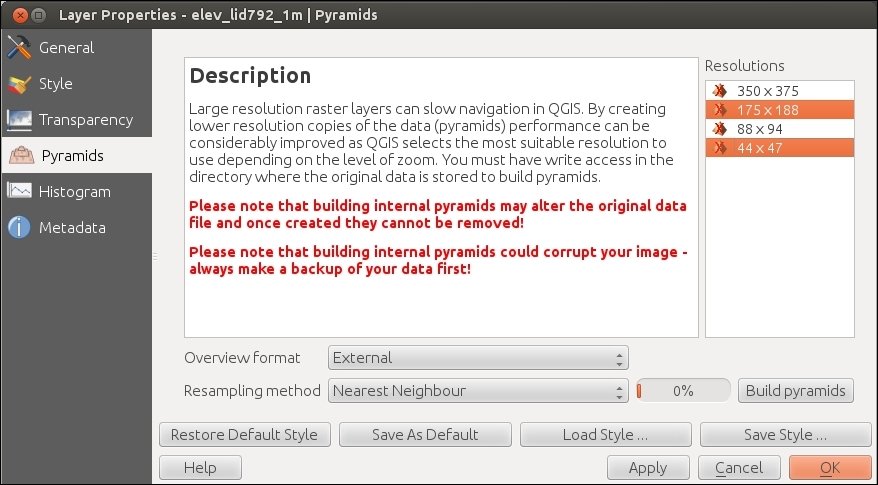Creating raster overviews (pyramids)
Overviews, or pyramids, and resampling are all about making raster layers load faster when zooming and panning in your map canvas, by reducing the amount of data loaded when not zoomed in all the way.
Getting ready
You will need a large raster image.
Tip
Generally, you want to make a copy of the data as this method will likely alter the original file if you choose to make 'internal' pyramids (easy to do on accident).
How to do it…
Load your raster in QGIS.
elev_lid792_1m.tifwill work fine for this example.Right-click on the layer name and open Properties.
Go to the Pyramids item on the left:

Select the image sizes that you want to create pyramids for:
Optionally, choose whether to store externally (safer) or internally (less files to keep track of).
Optionally, choose a resampling algorithm; Nearest Neighbor is the simplest, but other methods may look smoother at the cost of more data manipulation and compute time
Click on Build pyramids.
When this is completed...
























































